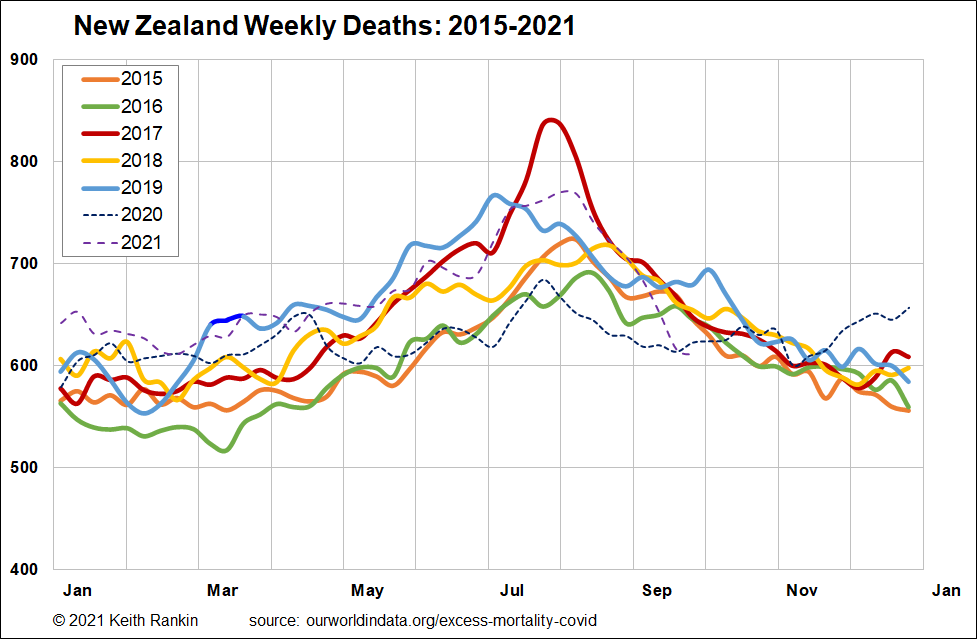Analysis by Keith Rankin.

The above chart of New Zealand weekly deaths since 2015 clearly shows the impact of winter influenzas and pneumonias on the mortality landscape of New Zealand. 2017 was a particularly bad year, with a substantially increased mortality in July of that year. 2016 was a particularly good year for mortality in New Zealand.
A technical note. The weekly death numbers are smoothed using three-period moving averages. This removes some of the random noise that would otherwise show in the chart. Note in particular, the plots for March 2019, when the Christchurch mosque massacre took place.
It’s important to note that New Zealand has a growing population, and an aging population. So, on average death numbers should be increasing for both reasons. Offsetting this is that New Zealand’s population is not aging as much as almost all other economically developed countries. And, we keep being told, especially by the finance industry, that life-expectancy is increasing in a steady and incremental way.
While 2017 was a bad year for what must have been an epidemic of respiratory illness, 2019 was clearly a bad year all around.
These death statistics help us to see the Covid19 perspective in context. First, for 2020, the events – the pandemic and our responses – saved many lives; perhaps more accurately, given that we all die someday, the public health context of 2020 postponed many deaths. There was still a July peak that year; clearly not due to influenza, so probably covid deaths briefly postponed. From mid-June to mid-August New Zealand was at Public Health Level 1, the lowest level of pandemic restrictions.
An interesting pattern emerges after November 2020, with summer deaths clearly higher than we would have expected had 2020/21 been a normal summer. After that, 2021 deaths tend to trace 2019, a bad year. Again, there was an interesting mortality peak which cannot be attributed to influenza; though that peak may be partially explained by other respiratory infections. Also, the August 2020 lockdown has brought down the spring 2020 death rate, which may otherwise have plateaued at the July high for 2020.
I have a sense that, once freed from public health mandates, there may be a proclivity by many to live life a little more recklessly than we would have in the 2010s. This is a possible conclusion that reflects the high Labour Weekend road tolls in 2020 and 2021.
In August and September 2021 we clearly see the impact on deaths of the Level 4 lockdown. Overall, Covid will have saved many Kiwi lives by the end of this year. 2022 may be another matter.
Keith Rankin (keith at rankin dot nz), trained as an economic historian, is a retired lecturer in Economics and Statistics. He lives in Auckland, New Zealand.








